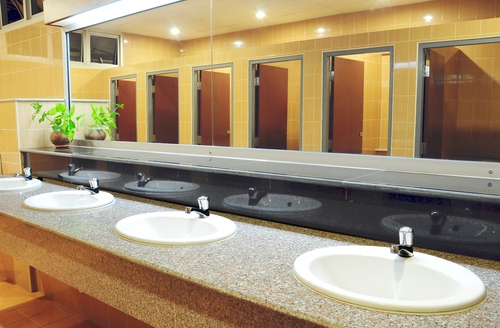Think your office is clean? Think again. There are so many places that dust, dirt, and germs to hide in your office, and without investing in a regular, professional cleaning service, it’s hard to keep all these places clean and, by doing so, maintain a healthy work environment for your company.
Keeping your office clean will not only reduce the likelihood of employees calling in sick, but it will also increase their energy levels and productivity while at work. It will also help you reduce overhead by avoiding purchasing entirely new carpet and upholstery every few years.
Identifying “Problem” Areas
So, we’ve established that taking care of the cleanliness of your office is important for a number of different reasons, but we must also examine those “problem” areas that might require a bit of extra attention. While a regular service can handle most of your cleaning needs, dust, dirt, and germs never take a day off, so there will always be daily maintenance tasks that can help you keep your office spotless.
According to a recent study conducted by Kimberly-Clark Professional, the dirtiest place in the typical office is the sink faucet handles in your employee break room. This study is part of a larger program designed to “help companies provide their employees with a healthier and more productive office environment.”
Researchers in this study swabbed nearly 4,800 different surfaces in various office buildings that house somewhere around 3,000 employees. The types of offices included in the study were manufacturing facilities, law firms, insurance and healthcare companies, and call centers.
The samples taken for the study were tested in a device that measures ATP, which is the energy molecule found in all animal, plant, bacteria, yeast, and mold cells. According to the maker of the device, food residue, and residue from other organic materials contain large amounts of ATP.
In general, a reading above 100 signals that the surface swabbed could be in use of cleaning. A reading above 300, however, indicates that the surface is “officially dirty,” and should be given a thorough cleaning immediately. While the device used in this study doesn’t specifically detect germs, we do know that dirty surfaces provide ample breeding ground for bacteria.
Study Results
The study identified six key surface areas of the office with a significant percentage registering a reading of 300 or more. Break room sink-faucet handles came back with a reading of 300 or more in 75 percent of offices swabbed. Microwave door handles registered a 300+ reading in 48 percent of office buildings included in the study.
Keyboards, refrigerator door handles, water fountain buttons, and vending machine buttons were identified as the remaining four dirtiest areas of your office. These surfaces came back with a reading above 300 in 27%, 26%, 23%, and 21% of office buildings, respectively.
In addition, computer mice, desk phones, and coffee pots and dispensers were identified in the “could-be-cleaner” category, as they registered readings over 100 in 51%, 51%, and 48% percent of buildings sampled, respectively.
While most people are acutely aware of the fact that bathrooms can be common breeding grounds for germs, many companies neglect the regular cleaning of their employee break room. This study exemplifies the importance of maintaining the cleanliness in the area most of your employees frequent during meal times.


